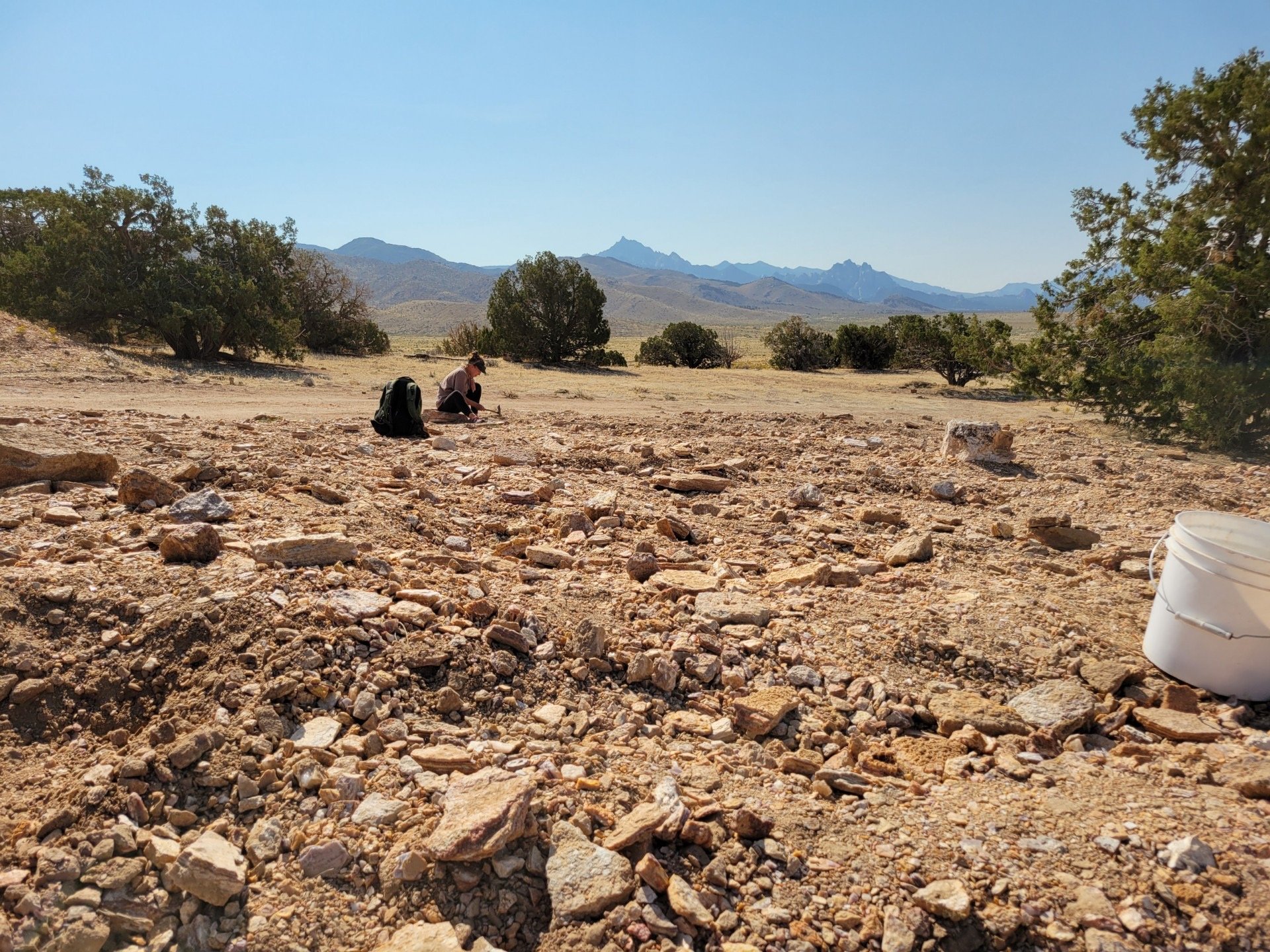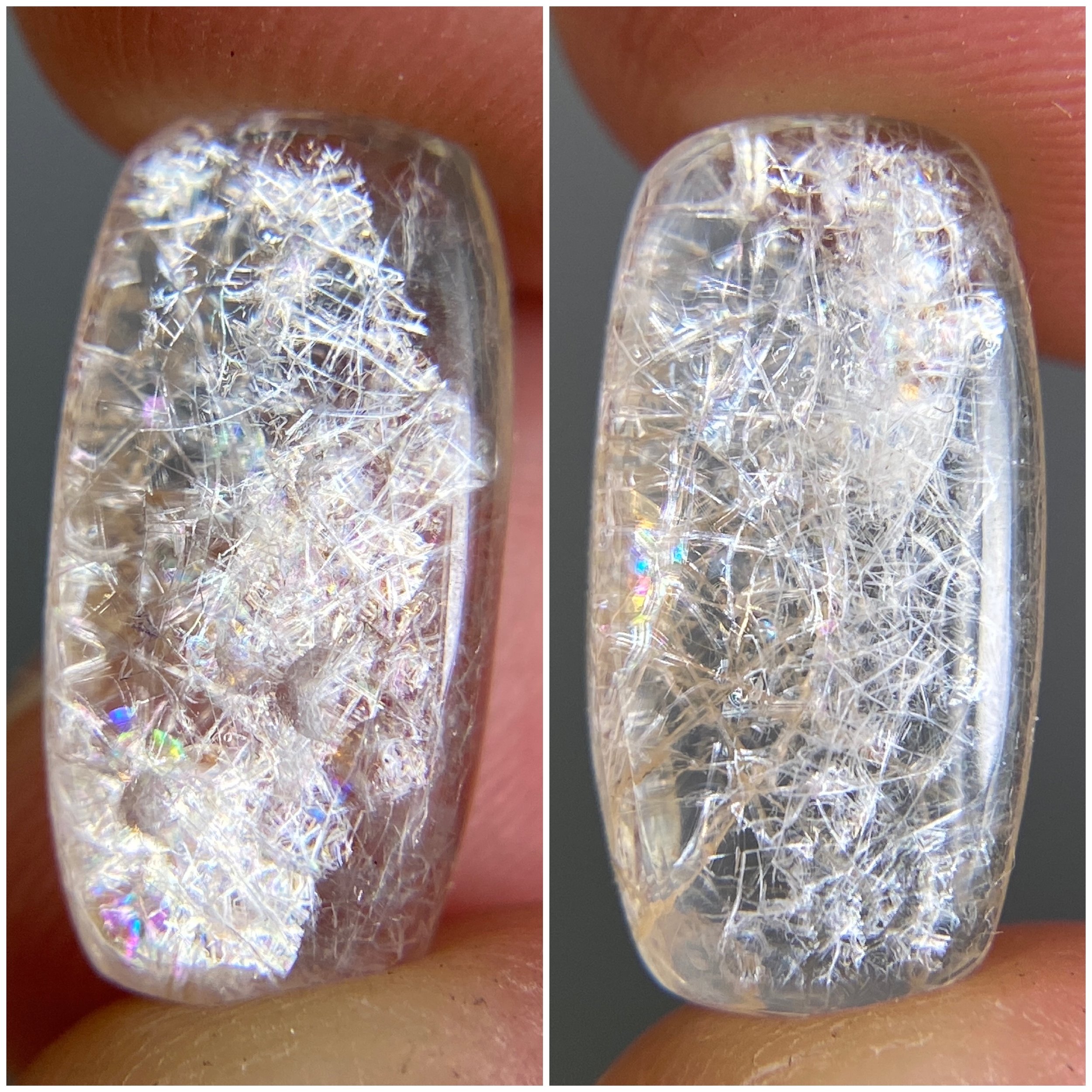What is hyalite opal?
When we think of opal, we immediately imagine the miraculous rainbow material that comes from Australia. But not all opal comes from the Aussies! There are plenty of really neat opal varieties that are right in our backyard in the United States, like hyalite opal.
This is a piece of Utah bubble opal that shows off both bubble and basketweave internal formations with some color play interspersed.
What is hyalite opal?
Hyalite opal is an all-natural opaline silica that’s formed from mineralized geothermal environments that flow along an underground fracture system (also called a “silica splinter seam”).
How is hyalite opal formed?
As the boiling silica-mineral water reached the surface, it quickly cooled and formed the layers of opal (also called “amorphous silica” because it doesn’t have a clearly-defined shape like you’d find with minerals).
(Pictured is a sample of Utah Candy bubble opal. Image courtesy of Mark Marriott).
Where is hyalite opal found?
Hyalite opal can be found in many different places all over the world, like Australia, Canada, France, Germany, Mexico, the United States, and many other locales.
But out of all of these locations, there’s only one very unique type of hyalite opal that comes from Milford, Utah that is unlike any of these other hyalites.
This is me rockhounding for the material I use in my hyalite opal jewelry at the Rock Dreams Claim in Milford, Utah.
How is Milford hyalite opal different from any other hyalite opal in the world?
The hyalite opal found in Milford, Utah is so different from other hyalite opals in that—in general—it doesn’t fluoresce under UV light like other types—but instead has a white chatoyance that makes it shimmer quite like the precious opal of Australia.
I self-collect the material in my hyalite opal jewelry from the Rock Dreams Claim in Milford, Utah. As of 2024 and writing this article, it is a private claim owned by Mark and Pam Marriott who allow rockhounds to come out for pay-digs during the season.
Unlike most hyalite that isn’t stable enough to cut and polish, Milford’s hyalite opal is well-formed and has a hardness of a 5.5-6 on the Mohs scale, making it a good stone to use for all kinds of jewelry.
Milford’s hyalite opal is also not heat-sensitive as other hyalites; these other types can easily shatter when you create any heat to buff or polish them.
(Pictured shows the different colored layers of hyalite opal in situ, ranging from reds to yellows to browns and clears depending on how the silica-rich layers deposited. This is a sample of Wildfire Opal. Image courtesy of Mark Marriott.)
When was Milford’s hyalite opal formed?
The Marriots are working with geologists on aging of this particular material. They believe that this formation stopped forming opal probably 12,000 years ago, but it may be as old as 60,000 years old. This formation reaches a depth of 30ft in some places.
Despite when the opal is formed, creating this opal takes a few hundred years as the silica-rich flows of thermal water deposit over a long period of time.
(Pictured is a great sample of the Wildfire Opal variety of Milford’s hyalite opal. Specimen and image courtesy of Mark Marriott.)
What is Milford’s hyalite opal called?
While “hyalite opal” is more of the correct geological name, there are plenty of common names for the different kinds of hyalite opal you can find in Milford. One of the most common names you’ll hear is “bubble opal” because its appearance is that of bubbles trapped in stone.
But the clear bubble opal isn’t the only type you can find at the Rock Dreams claim: they also have Bacon Opal, Wildfire Opal, Utah Lace Opal, Candy Bubble Opal, Satin Flash opal, and Gold Sheen Opal, all named after the various appearances due to whatever kind of mineral flowed into the silica-rich water when the opal layers deposited.
This is Utah Lace Opal slab with rich coloring which shows how a variety of minerals were deposited over hundreds of years.
How does Milford’s hyalite opal get its flash?
Milford’s bubble opal gets its shimmery appearance because of the closely packed spheres of silica arranged in the stone.
It’s the light reflecting off these spheres that give the opal its shimmer and color play. The internal formations can appear like bubble-like structures or delicate basketweave strands.
These are a matching pair of hyalite bubble opal cabochons with excellent clarity and color play. These exhibit both the basketweave strands and some bubble formations at the bottom of the one on the left.
Does Milford bubble opal have color play like Australian opal?
Yes, it does! If you’re lucky, you’ll find a clear bubble opal that has a rainbow of color inside the stone when you move it around in the light.
As the hyalite opal cooled, it would fracture (and oftentimes, it re-healed). This fracture diverts the light, creating the color play or “fire” you see.
Pictured is a sample of the satin sheen hyalite opal with very clear botryoidal formations inside the cabochon.
Why is bubble opal not as well-known or popular as other types of opal?
Unlike stones like turquoise or ocean jasper that has an automatic color appeal, you have to educate people on bubble opal since many people believe at first glance that hyalite opal is just “broken glass” (which it’s clearly not).
This is a big reason for writing this article: to bring more awareness to this amazing material that’s only found in one place on Earth (that we know of so far!).
This article was assisted with the help from interviews with Richard Williams (a previous co-owner of the Milford hyalite opal claim), Mark Marriott (current owner of the Milford hyalite opal claim), and Kenneth Shelley (Marriott’s assistant on the Milford hyalite opal claim).
Looking for hyalite opal jewelry?
Shop my hyalite opal jewelry collections here.










